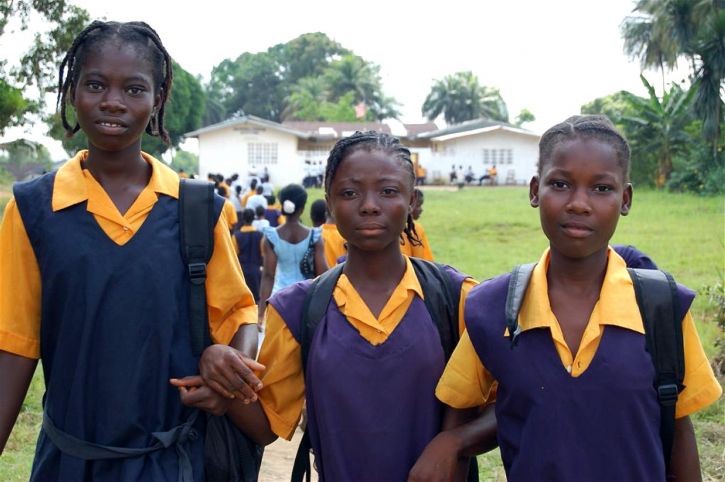How Liberia can make strides in quality education, reduce illiteracy rate
Liberia is significantly behind most other African countries in nearly all education statistics, the long-standing consequential impact of two civil wars and 2015 school closure due to the Ebola Viral Disease outbreak.

Among several factors, education is always a vital one to bring transformation in society. Education is the actual foundation in taking the economy of a state or country to the lofty heights. Unfortunately, the situation in Liberia is not the same. After decades of war and the Ebola crisis, around 80 percent of the Liberian public education system was destroyed.
Why Liberia’s literacy rate is low
According to the Liberia Demographic and Health Survey in 2017, in rural places, 30 percent of 15 to 24-year-old men and 30 percent of 15 to 24-year-old women were illiterate. Around 47.5 percent of the adult population (aged 15 years and above) in Liberia are able to read and write. The literacy rate for the adult male population is 62.42 percent and the female population is 32.82 percent. The overall youth literacy rate is 54.47 percent, in which literacy rates for youth males and females are 64.66 percent and 43.97 percent respectively.
According to the latest data revealed by Trading Economics, the unemployment rate in Liberia, unfortunately, remained unchanged at 2 percent in 2019 from 2 percent in 2018, while the country witnesses a rapid increase in population from 4.47 million people in 2015 to 5 million in 2019. The population of Liberia represents 0.06 percent of the planet’s total population that arguably means that one person in every 1689 people on the planet is a resident of Liberia. Overpopulation is another cause of over 159,479 out of school children (in 2017) in Liberia.
In nutshell, the education system in Liberia is emerging from a prolonged and brutally destructive period of civil unrest. The country is significantly behind most other African countries in nearly all education statistics, the long-standing consequential impact of two civil wars and 2015 school closure due to the Ebola Viral Disease outbreak. These continued to take a toll on the fragile education system.
Is the PSL program beneficial for Liberia?
The former President of Liberia, Ellen Johnson Sirleaf and (former) Minister of Education, George Werner obviously knew that paving the way towards educating and shaping the country’s future had to metamorphose with bold progressive reforms. Consequently, they devised the Partnership Schools for Liberia (PSL) program to see how independent school operators could quickly establish some successful public schools. The program is intended to delegate and transfer administrative management of 92 randomly assigned public schools to a variety of private, for-profit companies and non-profit organizations to provide education free of charge to students.
What Education Ministry can do?
Liberia is still in the process of rebuilding its educational system. In association with other donors, USAID and other international bodies are working with the country’s Education Ministry to address education challenges related to access, quality of instruction, and improved governance of the education system. Now the Ministry of Education needs to fast-track a new model of the smart classroom with the objective of raising the quality of education. The government should put up the initiative of equipping schools with computers and access to the Internet. The responsibility of the government is to first identify a good number of schools to potentially take the lead in implementing smart classroom project.
The government of Liberia should pick up the onus of encouraging schools to identify secure rooms where the installation of computers and other ICT related infrastructure becomes practically possible. The ICT in education does not simply mean making the students access to computers but ensuring the use of devices to broaden their knowledge in the subjects they deal with. A time frame should be kept by the government until then all the public schools must be equipped with smart classrooms.
The use of computers in classrooms extended in the last decade and became widespread. Computers have pervaded in every aspect of the educational institution. There are several new technologies being used in classrooms today such as online teaching, podcasting, social networking, interactive whiteboards, mobile devices to cite a few. In simple words, new technologies make the learning process easier and distance learning convenient.
Liberia needs to follow Rwanda’s steps to develop quality education
If we give a look at a rapidly developing African country like Rwanda, the nation’s educational goals are centralized around ICT (Information and Communications Technology), science and girls’ education. The East African country has provided the teaching and learning of Science, Technology Engineering and Mathematics (STEM) a special place in the education system. The Rwandan government under Paul Kagame has not only made significant strides in STEM education, but it (the government) has also been putting efforts in promoting the teaching and learning of science and technology.
The government of Rwanda is a beautiful example to be posed in terms of building the required infrastructure, providing the equipment and other materials required for teaching and learning. The government also trains teachers in how to deliver lessons to ensure the enhancement of learning and create a link between classroom learning and the environment. The schools in Rwanda are considered never complete without a laboratory.
Rwanda’s model for quality education can be considered ideal for Liberia if the government puts its eye on Sustainable Development Goal 4 (SDG 4 - Ensure inclusive and equitable quality education and promote lifelong learning opportunities for all) set by the United Nations to be achieved by 2030.
(Disclaimer: The opinions expressed are the personal views of the author. The facts and opinions appearing in the article do not reflect the views of Devdiscourse and Devdiscourse does not claim any responsibility for the same.)
- FIRST PUBLISHED IN:
- Devdiscourse










